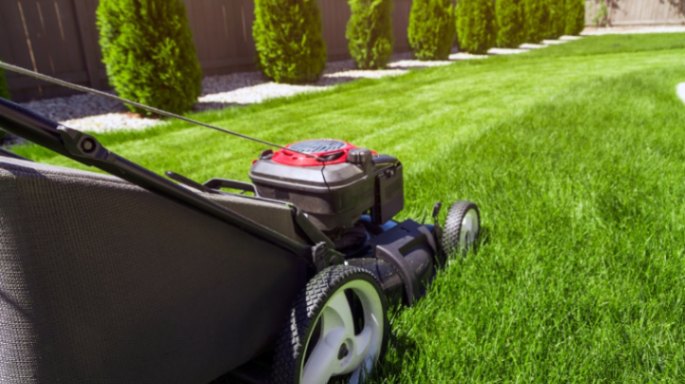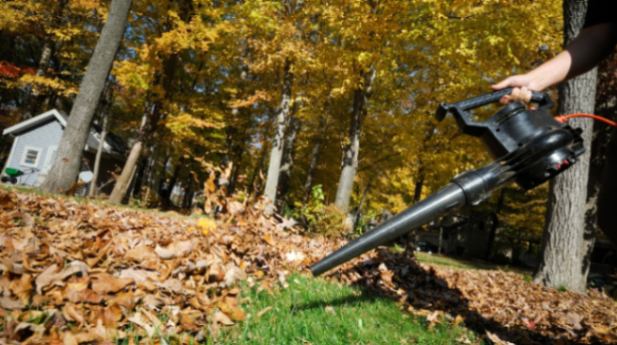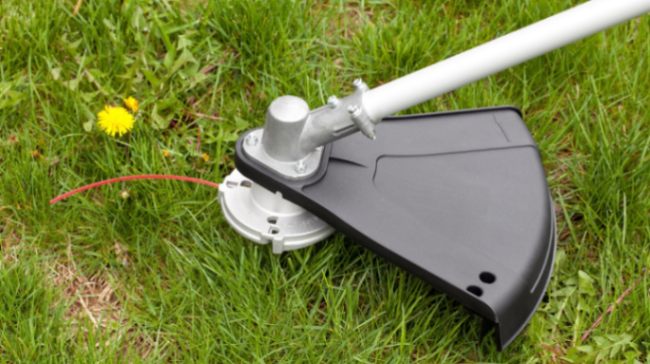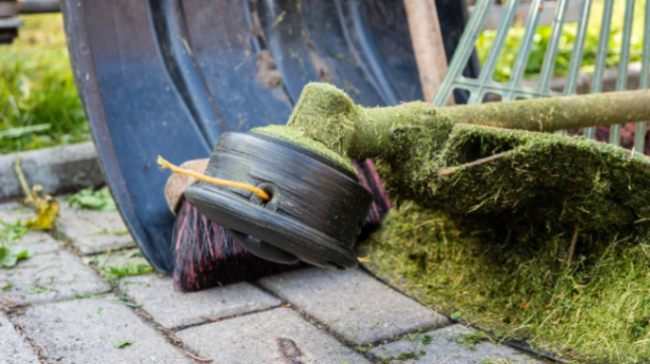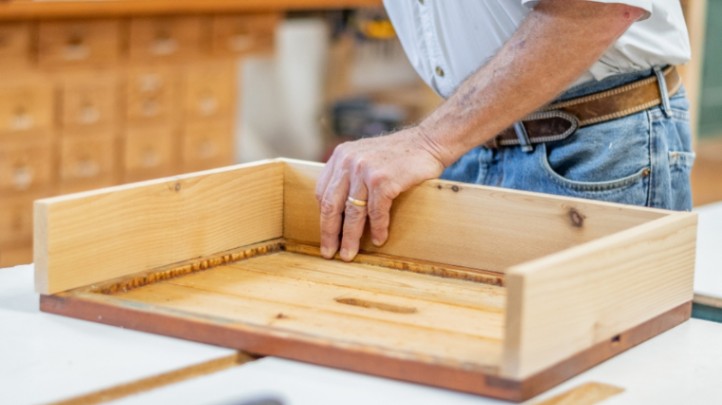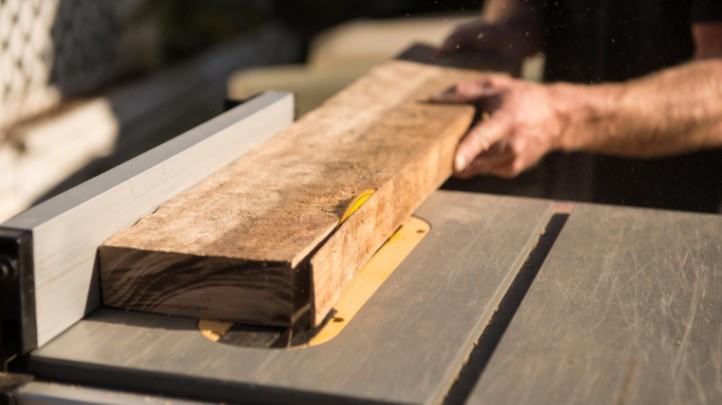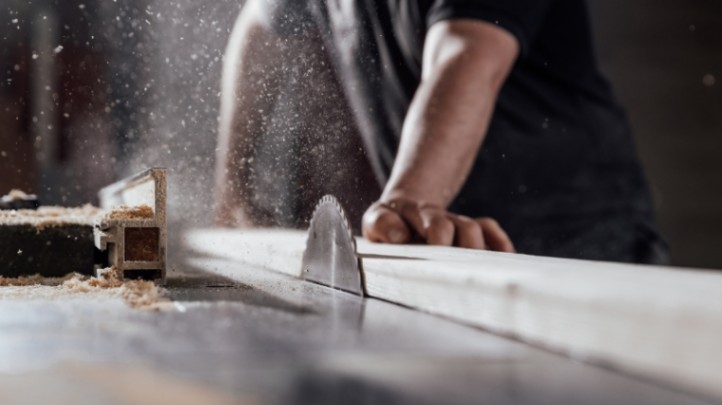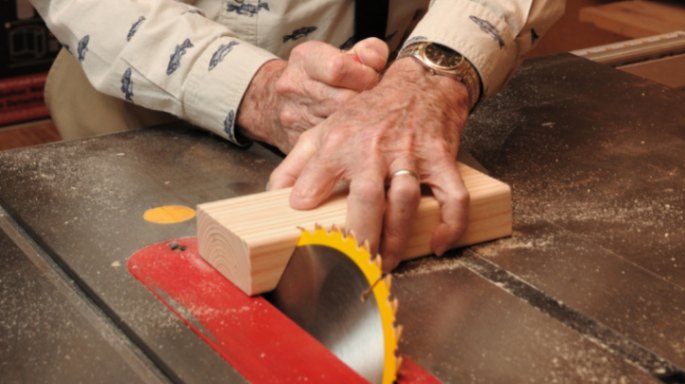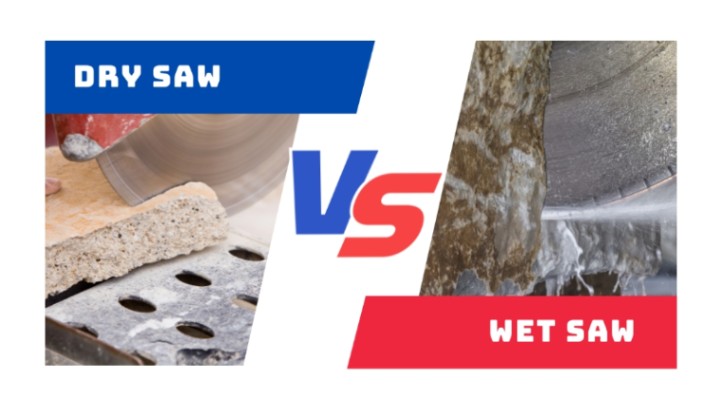Lawn care can be daunting, especially when managing fallen leaves in autumn. However, with the right equipment, you can make this task easier and benefit your lawn. Leaf mulching lawnmowers are a popular tool used by many homeowners to manage fallen leaves while also adding organic matter to their lawns. This article will discuss the Best Practices for Leaf Mulching Lawn Mower to get the most out of this tool.
Choosing the Right Lawn Mower for Leaf Mulching
If you’re a homeowner, you’re probably already familiar with the struggle of keeping your lawn and garden tidy. One of the most frustrating tasks is constantly cleaning fallen leaves during fall. However, leaf mulching is an effective solution to this problem. Not only does it help reduce the amount of waste that needs to be removed, but it also adds nutrients back into the soil. But, to effectively mulch leaves, you need the right lawn mower. Here, we’ll discuss the different types of lawn mowers suitable for leaf mulching, the features to consider when selecting a lawn mower, and the importance of the right blade.
Types of Lawn Mowers Suitable for Leaf Mulching
Push Reel Mowers
Push reel mowers are an excellent option for those with smaller lawns. They are eco-friendly, budget-friendly, and produce no noise. Push reel mowers have sharp blades that work by cutting the grass and leaves in a scissor-like motion. These mowers work well for leaf mulching if the leaves are not too thick or wet.
Electric Lawn Mowers
Electric lawnmowers are becoming increasingly popular due to their efficiency and eco-friendliness. They come in corded and cordless models, and both can effectively mulch leaves. However, cordless electric mowers have the advantage of being more maneuverable as they don’t require an extension cord.
Gas-Powered Lawn Mowers
Gas-powered lawn mowers are the most potent option for leaf mulching. They are suitable for more extensive lawns and can handle thicker and wetter leaves. However, they are also the most expensive and produce emissions that are harmful to the environment.
Preparation before Leaf Mulching with a Lawn Mower
Before you start leaf mulching with a lawn mower, there are some essential steps you need to take to ensure that the process goes smoothly. In this section, we’ll cover the best time to mulch leaves with a lawn mower, pre-mowing tips before mulching leaves, and how to prepare your lawn mower for leaf mulching.
The Best Time to Mulch Leaves With a Lawn Mower
The best time to mulch leaves with a lawn mower is when the leaves are dry. Wet leaves can clog the lawn mower’s blade and chute, making it difficult for the mower to mulch the leaves effectively. Ideally, it would be best to wait until after most of the leaves have fallen and have had a chance to dry out for a few days.
Pre-Mowing Tips Before Mulching Leaves
Before you start mulching leaves with your lawn mower, preparing your lawn for the process is essential. Here are some pre-mowing tips to follow:
Clear the Lawn
Ensure your lawn is free of debris or obstacles, such as toys or branches, that could damage the lawn mower or cause injury.
Adjust the Blade Height
Adjust the blade height of your lawn mower to a level suitable for leaf mulching. This will prevent the mower from scalping the lawn and ensure the leaves are mulched evenly.
Check the Air Filter
A dirty air filter can reduce the performance of your lawn mower. Before mulching leaves, check the air filter and replace it if necessary.
Sharpen the Blade
A dull lawn mower blade can tear the leaves instead of cutting them, resulting in uneven mulching. Make sure your lawn mower blade is sharp before you start mulching leaves.
How to Prepare Your Lawn Mower for Leaf Mulching
In addition to pre-mowing tips, there are some specific steps you can take to prepare your lawn mower for leaf mulching:
Install a Mulching Blade
A mulching blade is designed to cut the leaves into smaller pieces, which makes them easier to decompose and adds nutrients back into the soil. If your lawn mower has no mulching blade, you can purchase and install one separately.
Adjust the Chute
Adjust the chute of your lawn mower to direct the mulched leaves back onto the lawn. This will help the leaves decompose and add nutrients back into the soil.
Clean the Lawn Mower
Before you start mulching leaves, ensure your lawn mower is clean and debris-free. This will help prevent clogs and ensure the lawn mower operates at peak performance.
Following these steps, you can prepare your lawn mower for leaf mulching and ensure the process goes smoothly. With the right lawn mower and preparation, you can turn a tedious task into a beneficial process for your lawn and garden.
Proper Leaf Mulching Techniques with a Lawn Mower
Once you have prepared your lawn mower for leaf mulching, it’s essential to use proper techniques to ensure that the leaves are mulched evenly and effectively. In this section, we’ll cover height adjustments for leaf mulching, mowing patterns for optimal leaf mulching, and how to avoid scalping when mulching leaves.
Height Adjustments for Leaf Mulching
The height of your lawn mower’s blade is an essential factor to consider when mulching leaves. If the blade is too low, it can scalp the lawn and damage the grassroots. If the blade is too high, it may not effectively mulch the leaves. Here are some tips for adjusting the blade height for leaf mulching:
Set the Blade at 3 Inches
Set your lawn mower’s blade to a height of 3 inches for optimal leaf mulching. This height will allow the blade to effectively mulch the leaves without scalping the lawn.
Adjust for Leaf Thickness
If you have thicker leaves, you may need to adjust the blade height slightly to ensure the leaves are mulched evenly.
Check the Lawn After Mowing
After mowing, check the lawn to ensure the grass is not scalped and the leaves are mulched evenly. If necessary, adjust the blade height the next time you mulch leaves.
Mowing Patterns for Optimal Leaf Mulching
The mowing pattern you use can also affect the quality of leaf mulching. Here are some tips for mowing patterns:
Alternate Directions
Mow in different directions each time you mulch leaves. This will ensure that the leaves are mulched evenly and reduce the risk of scalping the lawn.
Overlap Slightly
Overlap the rows slightly when mowing. This will ensure the leaves are evenly mulched and reduce the risk of leaving un-mulched patches.
Use a Spiral Pattern
A spiral mowing pattern can also be effective for leaf mulching. Start at the center of the lawn and mow in a spiral pattern outward. This will ensure that the leaves are evenly mulched and reduce the risk of scalping the lawn.
How to Avoid Scalping When Mulching Leaves
Scalping can occur when the lawn mower’s blade is too low and cuts into the grassroots. Here are some tips for avoiding scalping when mulching leaves:
Check the Blade Height
Ensure the blade height is set to at least 3 inches for leaf mulching.
Avoid Uneven Ground
Avoid mowing on uneven ground, which can increase the risk of scalping.
Avoid Mowing Wet Grass
Mowing wet grass can increase the risk of scalping. Wait until the grass is dry before mowing.
Following these proper techniques, you can effectively mulch leaves with a lawn mower without damaging your lawn. Adjust the blade height, use proper mowing patterns, and avoid scalping for optimal leaf mulching.
Maintenance of a Leaf Mulching Lawn Mower
Maintenance is essential to owning a lawn mower, mainly when using it for leaf mulching. Proper lawn mower care and maintenance will extend its lifespan, improve its performance, and prevent potential safety hazards. Here are some essential maintenance tasks for your leaf-mulching lawn mower:
Maintenance Schedule for a Leaf Mulching Lawn Mower
Your lawn mower manufacturer’s instructions manual provides essential guidance for maintenance schedules. A general rule of thumb is to perform maintenance tasks regularly, such as before or after each use or after every 25 hours. A typical maintenance schedule for a leaf-mulching lawn mower includes the following:
• Check oil levels regularly and change the oil as required, usually after 50 hours of use.
• Replace the air filter every season or after every 25 hours of use.
• Inspect and clean spark plugs, usually every season or after 100 hours of use.
• Check and adjust the blade for sharpness after every 10 hours of use.
• Inspect the belts and cables regularly and replace them if they show signs of wear or damage.
Importance of Cleaning a Leaf Mulching Lawn Mower
Cleaning your leaf-mulching lawn mower regularly will prevent rust and corrosion, remove dirt and debris, and keep the engine and other parts functioning correctly. Here are some cleaning tips for your lawn mower:
• Remove any grass clippings, leaves, and debris from the lawn mower after each use.
• Scrub the undercarriage with a wire brush to remove any stuck-on debris.
• Clean the air filter and housing with a brush or compressed air to remove dirt and debris.
• Wash the lawn mower exterior with soapy water and a sponge, rinse with a hose, and dry with a towel.
• Lubricate moving parts and the throttle control cable with a spray lubricant or oil.
How to Sharpen Blades of a Leaf Mulching Lawn Mower
A dull blade can result in a rough and uneven cut, leading to less effective leaf mulching. It is essential to sharpen your lawn mower’s blades regularly. Here’s how to do it:
• Remove and disconnect the spark plug wire to prevent accidental starting.
• Remove the blade, using a wrench or socket to loosen the nut that holds it in place.
• Use a metal file or a grinder to sharpen the blade by running it along the cutting edge.
• Make sure the blade is balanced by placing it on a balancing tool, and add or remove metal as needed to balance it.
• Reinstall the blade and tighten the nut securely.
By following these maintenance tasks, you can keep your lawn mulching lawn mower in excellent working condition and enjoy an efficient leaf mulching process for years.
Common Leaf Mulching Lawn Mower Mistakes to Avoid
Leaf mulching with a lawn mower is an excellent way to turn your lawn’s fall leaves into nutrient-rich compost. However, people make several common mistakes when leaf mulching, which can lead to poor results and even damage to your lawn mower. Here are some common leaf mulching lawn mower mistakes to avoid:
Over mulching
Over-mulching is one of the most common mistakes people make when leaf mulching. This happens when you try to mulch too many leaves at once, which can clog the lawn mower’s discharge chute and cause it to stall. Over-mulching can also cause the leaves to clump together, preventing proper decomposition.
To avoid over-mulching, it’s essential to start with a thin layer of leaves and work your way up gradually, making sure that the lawn mower is handling the load effectively. If the lawn mower is struggling or stalling, stop and clear the discharge chute before continuing.
Not Using the Right Type of Lawn Mower
Another common mistake is using the wrong type of lawn mower for leaf mulching. While many lawnmowers can mulch leaves, some are more effective. Mulching lawn mowers are designed for this purpose, with unique features such as high-lift blades and mulching decks designed to shred leaves finely.
If you try to mulch leaves with a standard lawn mower, it doesn’t work either, and you may need multiple passes to achieve the desired results. This can be time-consuming and may also put unnecessary strain on the lawn mower’s engine.
Mulching When the Leaves Are Wet
Mulching wet leaves is another common mistake that can lead to poor results. Wet leaves tend to clump together, making it difficult for the lawn mower to shred them finely. Wet leaves can also clog the lawn mower’s discharge chute, leading to stalls and other issues.
To avoid this mistake, wait until the leaves are dry before mulching them with your lawn mower. You can rake the leaves into piles and let them dry in the sun for a few hours before mulching them.
By avoiding these common mistakes, you can achieve optimal leaf mulching results with your lawn mower. It’s essential to follow the manufacturer’s instructions and properly care for your lawn mower to ensure that it performs effectively and lasts for years.
How to Use Mulched Leaves as Fertilizer
After mulching your lawn’s fall leaves, you can use the resulting leaf mulch as a nutrient-rich fertilizer for your garden or flower beds. Here’s how to use mulched leaves as fertilizer:
Benefits of Using Mulched Leaves as Fertilizer
Mulched leaves are an excellent source of organic matter that can help improve soil health and fertility. When leaves are mulched, they break down more quickly, releasing nutrients such as nitrogen, phosphorus, and potassium into the soil. This can help promote healthy plant growth and reduce the need for synthetic fertilizers.
Using mulched leaves as fertilizer can also help improve soil structure, water retention, and drainage. This can significantly benefit gardens and flower beds with heavy or compacted soil.
How to Use Mulched Leaves as Fertilizer
To use mulched leaves as fertilizer, spread a layer of the mulch over your garden or flower beds, covering the soil evenly. Mix the mulch into the soil using a garden fork or tiller.
It’s best to apply the mulch in the fall, after the leaves have been mulched, and before the ground freezes. This will give the mulch time to break down and release its nutrients into the soil over the winter months.
Precautions When Using Mulched Leaves as Fertilizer
While using mulched leaves as fertilizer can be beneficial, there are a few precautions to remember. First, using only leaves from trees that are not diseased or treated with pesticides or other chemicals is essential. Using contaminated leaves can introduce harmful substances into your garden or flower beds, harming plants and soil health.
It’s also important not to over-apply the mulch, as this can lead to nitrogen tie-up in the soil. This happens when the carbon in the mulch uses up the soil’s available nitrogen as it breaks down, making it temporarily unavailable to plants. To avoid this, apply a thin layer of mulch and monitor the soil’s nitrogen levels regularly.
In summary, using mulched leaves as fertilizer is an excellent way to improve soil health and promote healthy plant growth. Following these simple tips, you can make the most of your fall leaves and enjoy a more beautiful and productive garden.
Benefits of Leaf Mulching Lawn Mower
Before delving into the best practices of using a leaf-mulching lawn mower, it’s essential to understand the benefits of using one. Leaf mulching lawn mowers allow you to easily manage fallen leaves in a way that benefits your lawn. When you mulch the leaves, they break down and release nutrients into the soil, improving soil health and promoting healthier properties. Additionally, mulching the leaves can save you time and money since you won’t have to rake, bag, and dispose of the leaves.
FAQs
- Do I need a dedicated leaf mulching lawn mower to mulch leaves?
While a dedicated leaf-mulching lawn mower is ideal, any mower with a mulching blade and deck can effectively mulch leaves.
- How often should I mulch leaves?
It’s best to mulch leaves regularly throughout autumn to promote a healthier lawn.
- Can I leave the mulched leaves on the lawn?
Yes, leaving the mulched leaves on the lawn can promote a healthier lawn by adding organic matter to the soil.
- Will mulching leaves harm my lawn?
No, mulching leaves benefits your lawn by adding organic matter to the soil and releasing nutrients.
- How do I adjust the mower height for leaf mulching?
Check your mower’s manual for specific instructions on adjusting the deck height. Typically, you’ll want to set the deck at the highest height to avoid damaging the grass while effectively mulching the leaves.
Conclusion
Leaf mulching lawnmowers help manage fallen leaves while promoting a healthier lawn. By following these best practices, you can get the most out of your leaf-mulching lawn mower and make lawn care easier and more beneficial.
You may also like these posts!

